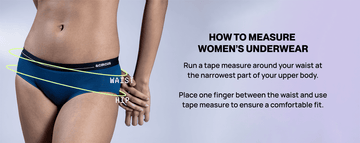In our era, where social media and visual representation often dominate our perception of beauty, it becomes imperative to understand the fine line between acceptance and the need for personal transformation. We live in an image-conscious society, and the complexities of body image can be a labyrinthine experience; between the call to embrace one's natural appearance and the pressures to conform to societal standards, we find a spectrum of feelings, beliefs, and actions.
The dichotomy creates a poignant question: How can we embrace our bodies while wanting to change them? We've explored the question, offering insight into the intricate balance between assuming who we are and striving to improve.
The Reality of Body Dysmorphia

A Distorted Perception
Body Dysmorphic Disorder (BDD), aka body dysmorphia, a condition where one obsesses over perceived flaws in their appearance, affects approximately 1 in 50 people. It goes beyond mere dissatisfaction with one's appearance. These flaws are often minor or nonexistent, but for those with body dysmorphia, these perceived flaws become all-consuming, often leading to severe emotional distress.
Impact on Mental Health
It tends to begin in adolescence and affects both men and women. Nearly 50% of those with BDD undergo unnecessary cosmetic procedures. Research shows that over 75% of people with body dysmorphia suffer from depression or anxiety. The constant struggle with self-image can lead to isolation and a decline in overall well-being.
Body Positivity: A New Perspective
In contrast to body dysmorphia's fixation on perceived flaws, body positivity emphasises self-love, acceptance, and appreciation for one's body, celebrating all bodies regardless of shape, size, or colour. It's a liberating framework that encourages individuals to embrace their unique physical appearance without societal pressures.
A survey conducted in 2020 found that 70% of women and 63% of men feel pressured by media images. According to recent studies, body-positive movements have led to a 30% increase in self-esteem among young adults.
Challenges in Practicing Acceptance

While the body positivity movement has brought much-needed attention to self-acceptance, it also has its critics. Some argue that it may inadvertently discourage healthy lifestyle choices, leading to complacency.
Self-acceptance can sometimes unintentionally pressure individuals to accept themselves without addressing underlying health or emotional issues. Encouraging body acceptance must balance recognising when change may be necessary for overall well-being.
Acceptance v/s Change
Navigating the tension between acceptance and the desire for personal transformation is no easy feat. Some argue that self-love and acceptance can conflict with the wish to change or enhance one's appearance.
The desire for personal transformation isn't inherently harmful. Genuine needs for better health, increased confidence, or personal growth can drive it. However, it may lead to unhealthy behaviours when influenced by external pressures or underlying mental health conditions like BDD. How does one embrace their body while striving for personal growth or change?
Strategies for Harmonizing Acceptance and Desire
Understanding Personal Motivations: Is the desire for change driven by self-love or self-loathing? Recognising the underlying reasons for wanting change can lead to more conscious decisions.
Setting Healthy Goals: Working towards achievable targets promotes a healthy attitude towards personal transformation. Goals should be based on health and well-being rather than societal standards; they foster a more balanced relationship with the body.
Seeking Professional Support if Needed: Therapists specialising in body image issues can provide personalised guidance and support if it becomes overwhelming.
A Journey Towards Self-Love
The relationship between body dysmorphia and body positivity is complex, layered, and often contradictory. While we advocate for the love and acceptance of all body types, there exists a tension between the appreciation of our natural selves and the desire to transform or align with societal ideals.
By understanding the complexities of body dysmorphia, embracing the principles of body positivity, and finding a personal balance between self-acceptance and transformation, women can embark on a journey towards self-love. It's a path filled with challenges, but with empathy, understanding, and compassion, it's a journey worth taking.
The journey to self-acceptance doesn’t mean letting go of personal growth; with mindfulness, the two can thrive together. Our bodies are a reflection of our individuality, and embracing them in all their uniqueness is the essence of true empowerment and self-care.





















